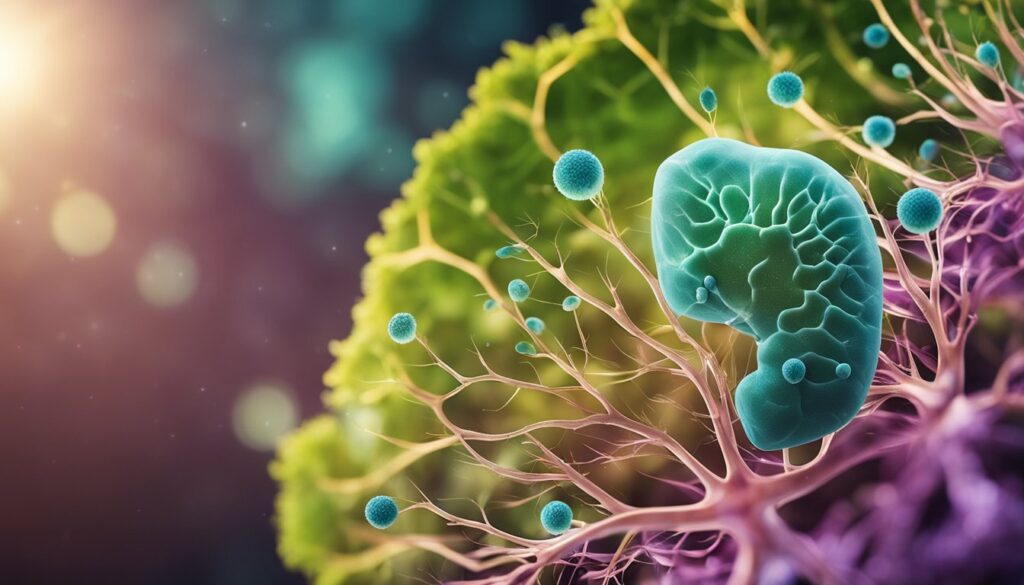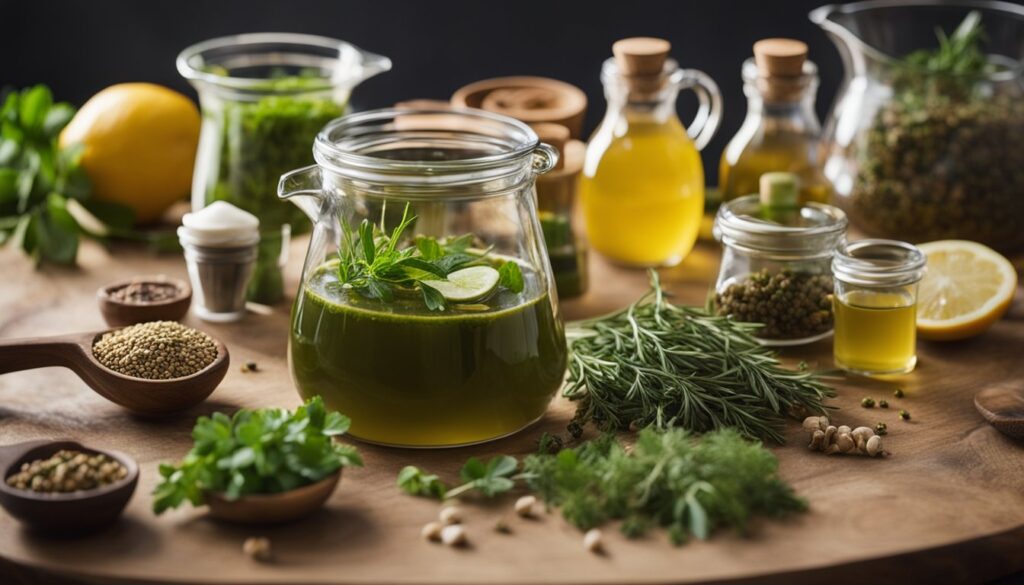The liver and gallbladder play pivotal roles in maintaining your body’s internal balance, predominantly through the processing and storage of nutrients, along with detoxification. A liver gallbladder flush, or cleanse, is designed to support these vital organs by aiding in the elimination of accumulated toxins and potentially gallstones. By using a combination of dietary changes and specific supplements, this process aims to stimulate the liver and gallbladder, enhancing bile flow and facilitating the removal of waste substances from your body.

Over time, certain lifestyle factors can strain your liver and gallbladder, leading to the buildup of substances that may contribute to discomfort and health issues. The liver and gallbladder flush is a holistic approach often praised by its proponents for its rejuvenating effects on the body. While this practice is lauded by many for providing relief and renewed wellness, it is important to approach such a cleanse with a clear understanding of its methods and potential impacts on your health.
If you’re considering a liver and gallbladder cleanse, it’s crucial to be well-informed about the process. It typically involves the consumption of a diet that is light on fats and rich in hydrating fluids, followed by an olive oil and lemon juice mixture intended to stimulate the organs. This technique aims to promote healthy digestive functioning and may assist in the natural passage of gallstones, although it is essential to consult with a healthcare professional before embarking on any cleansing regimen.
Understanding Gallbladder and Liver Health

Your liver and gallbladder play crucial roles in digestion and detoxification. Understanding their functions and how to maintain their health is vital for overall well-being.
Anatomy and Functions of the Liver and Gallbladder
The liver, your body’s largest internal organ, performs over 500 functions, including detoxification, metabolizing drugs, and producing bile crucial for fat digestion. Your gallbladder stores the bile produced by the liver, releasing it into the small intestine to aid in the emulsification of dietary fats.
Importance of Bile Production and Flow
Bile is essential for the digestion and absorption of fats. It contains bile acids, which are critical for breaking down fats and removing waste products from the liver. Proper bile production and flow are necessary to prevent the buildup of substances that could form gallstones.
Recognizing Symptoms of Gallbladder Issues
Be aware of signs indicating gallbladder problems, such as sudden pain in the upper right abdomen or just under the breastbone, which could signal gallstones or other gallbladder diseases. Other symptoms include jaundice, dark urine, or clay-colored stools. High levels of cholesterol in bile can lead to gallstone formation, which can obstruct the flow of bile and impact fat digestion.
Preparation and Procedure for a Flush

A successful liver and gallbladder flush begins with proper preparation. Key factors involve adjusting your diet, including necessary supplements, and following a detailed step-by-step process to ensure the best results for rejuvenation and cleansing.
Diet and Nutrition Prior to Cleanse
In the weeks leading up to your cleanse, focus on nutritious foods that support liver health. Consume plenty of vegetables, fruits, and incorporate healthy fats. A diet low in sugar and high in fiber can help in the preparation phase. Drinking apple juice or vegetable juice, such as from artichoke or beetroot, may soften gallstones due to their malic acid content.
Supplements and Natural Aids
Begin to introduce natural supplements into your routine. Milk thistle is renowned for its liver-supporting properties. Other beneficial supplements include turmeric, which has anti-inflammatory effects, and artichoke extract, which can stimulate bile flow. Vitamins, such as Vitamin C, are also integral to supporting your overall detoxification process.
Step-by-Step Gallbladder Flush Process
- Choose a Day: Select a day where you can rest and have no other obligations, as the cleansing process can be taxing.
- Morning Regimen: Start your day with lemon juice and olive oil; mix 1-2 tablespoons of organic olive oil with 1-2 teaspoons of lemon juice. Drink on an empty stomach.
- Epsom Salt: In the evening, dissolve Epsom salt in water as per the instructions—this acts as a laxative to open bile ducts and prepare for stone passage.
- Flush Drink: Before bedtime, prepare your flush drink with olive oil and grapefruit juice. Organic ingredients are preferable to maximize benefits.
- Rest: Immediately lie down in bed, staying still for at least 20 minutes.
- Next Morning: Expect to have bowel movements upon waking. Stones may be passed at this time.
Drink plenty of water throughout the process and ensure rest during the cleansing. Remember, the effectiveness of these procedures varies and always consult with a healthcare provider before undertaking a gallbladder flush.
Post-Flush Considerations
After completing a liver and gallbladder flush, it’s important to assess the effectiveness of the cleanse and ensure the continued health of your digestive system. You should also know when it’s appropriate to consult a healthcare professional.
Evaluating the Flush Efficacy
To determine if the flush was successful, evaluate your symptoms such as bloating, nausea, or constipation. If you noticed solid particles in your stool resembling small stones, this could indicate that gallbladder stones have been expelled. However, these could also be saponified artifacts from the flush ingredients. For a more accurate assessment, an ultrasound pre- and post-cleanse can verify changes in the presence of gallstones.
Maintaining Digestive Health Post-Cleanse
After a flush, focus on maintaining a balanced diet high in fiber and consider incorporating probiotics to support gut health. Bowel movements should normalize; diarrhea or constipation should resolve. If you experience fatigue or continued digestive disturbances, reassess your diet, and ensure adequate hydration. Include foods that support bile acid production, essential for breaking down fats and preventing gallbladder attacks.
When to Seek Medical Advice
Should you experience severe abdominal pain, vomiting, or jaundice (yellowing of the skin), seek medical advice promptly as these may signal an infection or complications such as SIBO (Small Intestinal Bacterial Overgrowth). If weight loss is significant or if symptoms of gallbladder attacks continue, professional evaluation is critical to rule out health risks and ensure no underlying conditions are present.
Risks and Misconceptions
In the pursuit of health and wellness, gallbladder and liver flushes are often presented as a means for body rejuvenation and cleansing. However, it’s crucial to discern fact from fiction, understand the potential health risks they carry, and recognize alternatives that may offer safer benefits.
Common Misunderstandings About Gallbladder Cleanses
Many people believe that gallbladder cleanses can flush toxins and gallstones from the body. Common methods include consuming substantial quantities of olive oil, juice—such as beet juice—and epsom salts. Advertisements suggest these ingredients can trigger detoxification, but medical experts, such as those from the Mayo Clinic, often dismiss these claims due to lack of scientific evidence. Misunderstandings also arise about the body’s natural detoxification systems, which are designed to filter out harmful substances without the need for drastic dietary interventions.
Toxins are indeed processed by the liver, but credible sources like the National Institute of Diabetes and Digestive and Kidney Disease clarify that healthy livers and gallbladders do not require ‘cleanses’ to remove bilirubin, calcium salts, or gallbladder sludge.
Scientific Scrutiny and Health Risks
Pursuing a gallbladder cleanse without medical consultation can lead to serious health risks. You might experience inflammation, nausea, diarrhea, vomiting, and abdominal pain due to excessive laxative effect and irritation of the gastrointestinal tract. These procedures can sometimes do more harm than good, causing bloating, an imbalance in healthy fats, or in severe cases, liver injury.
Scientific scrutiny reveals that rapid and uncontrolled release of gallstones can lead to complications requiring surgery or surgical removal, with some individuals resorting to emergency treatment or hospitalization. Misguided use of nutritional supplements and dietary supplements—including vitamin C and dandelion root—often lack clinical support for their efficacy and safety.
Alternatives to Gallbladder and Liver Flushes
If you’re looking to support your liver and gallbladder health, consider safer alternatives. A healthy diet low in refined carbohydrates, fried foods, and saturated fat can naturally support your body’s wellness. Incorporate healthy fats like those from fish and avocados, while maintaining hydration and a balanced intake of sea salt.
Instead of seeking drastic detoxes or juice cleanses, focus on gradual, sustainable changes. Fullscript, a platform for healthcare providers, suggests that incorporating whole foods, engaging in regular physical activity, and avoiding high-fat foods associated with gallbladder strain are proactive steps towards maintaining good health. Always discuss any significant changes with a healthcare provider, particularly before taking any medication or attempting alternative treatment methods.
Conclusion
In the quest for improved wellbeing, the concept of a liver and gallbladder flush is often considered as a potential means to support detoxification. Your liver is instrumental in filtering toxins, and the gallbladder’s role in digestion is to store bile produced by the liver. A buildup of substances like gallstones can impede these functions.
If you are pondering a cleanse, it is essential to:
- Undertake thorough research or consult a healthcare provider to ascertain the most suitable method for you.
- Set aside adequate time for the preparation phase, recommended by some to last a few weeks.
- Recognize that the actual cleansing process could take anywhere from 16-20 hours.
Remember, the effectiveness and safety of these cleanses vary, and scientific evidence backing these methods is not robust. Although many individuals report feeling a sense of rejuvenation post-cleanse, it’s crucial to approach this practice with caution and remain informed of both the potential benefits and risks.
In your pursuit of health, always prioritize approaches that are evidence-based and align with your body’s needs. When considering a liver and gallbladder cleanse, balance this consideration carefully alongside established health guidelines and protocols.
Frequently Asked Questions
In this section, you’ll find concise answers to common queries about liver and gallbladder flushes. Understand the side effects, rejuvenating effects, best practices, recommended herbs, and scientific evidence associated with these cleansing regimens.
What are the potential side effects associated with a gallbladder cleansing regimen?
During a gallbladder cleansing, you may experience uncomfortable side effects such as abdominal pain, nausea, vomiting, diarrhea, or even an increase in gallstone movement which could necessitate medical intervention.
Can a liver and gallbladder flush effectively rejuvenate these organs and, if so, how?
A liver and gallbladder flush is said to rejuvenate by removing substances like gallstones that can impede organ function. However, the extent of rejuvenation largely depends on individual health status and the method used.
What is considered the best practice for conducting a safe and effective gallbladder cleanse?
Best practices for a safe and effective gallbladder cleanse involve gradual preparation, often including a diet high in fiber and low in fats, along with staying well-hydrated. It’s crucial to consult with a healthcare provider before starting any cleanse.
Which herbs are recommended to aid in the detoxification during a gallbladder cleanse?
Herbs like milk thistle, turmeric, and dandelion are commonly recommended to aid in detoxification during a gallbladder cleanse due to their purported liver-supportive properties. They are thought to promote bile flow and liver health.
Is there scientific evidence supporting the efficacy of liver and gallbladder flushes?
The efficacy of liver and gallbladder flushes is a subject of debate. While proponents cite anecdotal successes, many medical professionals demand more rigorous scientific evidence to support these practices’ purported benefits.